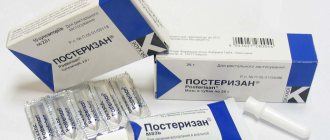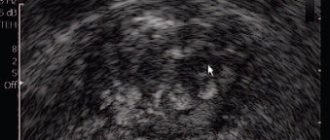Glutoxim®
Glutoxim® is the first drug created using the scientific and technological platform we developed, but it has limited capabilities compared to subsequent developments. It represents the basic primary MFA.
Instructions for use
Instructions for use
It has an immunomodulatory effect and is the only drug approved for clinical use from the group of regulators of the body’s own defense systems; Leads to the formation of a functionally active structure of internal hematopoiesis stimulants and receptors for them, which normalizes hematopoiesis and blood composition;
Increases the number of receptors in a functionally active state. When treated with the drug, the effect on the xenobiotic receptor is simulated - the cell develops defense enzymes and turns out to be more resistant to adverse effects;
Suppresses the ability of tumor cells to remove drugs aimed at their destruction, as well as molecules synthesized by cells of the immune system. Glutoxim® is characterized by the ability to initiate redox processes of the formation of disulfide bonds in the structure of extracellular and cell-surface molecules of a peptide nature. The main components of the pharmacological activity of the drug are the enhancement of bone marrow hematopoiesis (the processes of erythropoiesis, leukopoiesis and granulocyto-monocytopoiesis), activation of the phagocytosis system (including in conditions of immunodeficiency states), restoration in the peripheral blood of the level of neutrophils, monocytes, lymphocytes and the functional capacity of tissue macrophages.
The stimulating effect of the drug Glutoxim® on the effector, secretory, excretory and metabolic functions of monocytes/macrophages includes:
- reactions of binding, recognition and presentation of antigenic material, which predetermine subsequent antibody formation and elimination of pathogens;
- secretion of humoral factors that normalize the development of local and systemic neuroimmunoendocrine reactions during chronic inflammation;
- mobilization of iron and elimination of its redistribution deficiency in the body, availability for the synthesis of heme and key cofactors of oxidative metabolism in red blood cells and other tissues.
Application:
| For Tuberculosis: increases the effectiveness of anti-tuberculosis therapy and reduces the risk of developing MDR; reduces the toxicity of anti-tuberculosis chemotherapy; | |
| In Oncology: improves tolerability of chemotherapy, radiation and chemoradiotherapy; potentiates the therapeutic effect of chemotherapy; potentiates the therapeutic effect of radiation/chemoradiotherapy; selectively inhibits drug resistance of tumor cells; increases the duration of disease remission and life expectancy of patients; improves the quality of life of patients both during treatment and during follow-up. | |
| Application in Dermatology: increases the effectiveness of psoriasis therapy; has a hepatoprotective effect; improves the quality of life of patients; increases the effectiveness and also reduces the toxicity of photochemotherapy and cytostatic therapy, facilitates their implementation in full, without reducing the planned courses. | |
| For STIs: reduces the risk of recurrence of urogenital infections; improves sperm fertility and reproductive function; has a hepatoprotective and toxic-modifying effect. |
More than 100,000 tuberculosis patients
receive the drug every year throughout the country! Effect on immunity: has an immunomodulatory effect and is the only drug approved for clinical use from the group of regulators of the body’s own defense systems.
Effect on blood: leads to the formation of a functionally active structure of internal hematopoiesis stimulators and receptors for them, which normalizes hematopoiesis and blood composition.
Effect on detoxification processes: increases the number of receptors in a functionally active state. When treated with the drug, the effect on the xenobiotic receptor is imitated - the cell develops defense enzymes and turns out to be more resistant to adverse effects.
Influence on the resistance of microbial and tumor cells to the action of drugs: suppresses the ability of tumor cells to remove drugs aimed at their destruction, as well as molecules synthesized by cells of the immune system.
More information about use in diseases, effects on the body and mechanism of action on the website www.glutoxim.ru
Glutoxim amp 30mg/ml 2ml N5 (PHARMA YOU)
Glutoxim® is a Russian innovative drug, a representative of a new class of drugs - regulators of the body's defense systems (innate defense regulators, IDR). Drugs in this group, according to their pharmacological activity, belong to antibiotic adjuvants: the main effect of Glutoxim is the potentiation of anti-tuberculosis chemotherapy, incl. increasing the availability of Mycobacterium tuberculosis to the action of drugs and overcoming drug resistance of the pathogen. According to the results of fundamental and clinical studies, Glutoxim® enhances the secretion of endogenous antibiotics by macrophages - cationic antimicrobial peptides (CAP) (defensins and catalecidins), stimulates their absorption by mycobacteria. The action of CAP leads mainly to disruption of the structure and functions of the cytoplasmic membrane of the pathogen, which, in turn, leads to the death of the latter. The antibacterial activity of the drug Glutoxim® manifests itself when administered in vivo; for its implementation, it requires the presence of a pool of endogenous CAPs capable of mobilization, i.e., in relation to the action of the drug, CAPs act as effector molecules, predetermining its indirect antibacterial effect. The effect of the drug is complemented by the effect of overcoming the drug resistance of Mycobacterium tuberculosis to isoniazid. Glutoxim® initiates the transformation reaction of isoniazid (prodrug) into a pharmacologically active form - isonicotinic acid, which has an antimycobacterial effect against the pathogen, which makes it possible to overcome the drug resistance of Mycobacterium tuberculosis caused by negative transformation of the katG (catalase-peroxidase gene) and inhA (enol-ACP gene) genes -reductase). The effect of the drug is accompanied by an increase in the production of peroxynitrite and nitosoglutathione - compounds that have an independent bactericidal effect. It has also been shown that Glutoxim® limits the possibilities of intracellular parasitism of Mycobacterium tuberculosis. The drug stimulates exocytosis (removal) of vesicles with intracellular parasitic mycobacteria from macrophages, ensuring their removal from the pharmacological refuge and making them available for the action of antibacterial drugs, including isoniazid, rifampicin, rifabutin, cycloserine, capreomycin, levofloxacin. The pharmacological effect of Glutoxim in relation to the antibacterial activity of the listed antibiotics is potentiating, as it increases the accessibility of the target (microorganisms) to the action of the drug. Glutoxim® increases the frequency of cessation of bacterial excretion and reduces the time of sputum abacillation. By the end of the 2nd month of treatment among patients receiving Glutoxim®, bacterial excretion ceased in 91.1% of patients with drug-sensitive tuberculosis (vs 61.1% in the control group) and in 75.1% of patients with drug-resistant tuberculosis (vs 38.9% in the control) (p®reduces the time for resorption of infiltrative and focal changes in the lungs: by the end of the 2nd month of treatment, resorption of infiltrative and focal changes was detected in 93.2% of patients who received Glutoxim® along with chemotherapy (vs 62.2% of patients in the control group) (p® (vs 70.8% of patients in the control group) (rGlutoxim® improves the tolerability of anti-tuberculosis chemotherapy: toxic reactions (increased activity of ALT, AST, bilirubin, creatinine in the blood serum) were observed in only 4.3% of patients, while in the control group - in 11.1 % of patients (р®) were observed significantly less often - in 6.4% of patients, while 20% in the control group (р®), were stopped mainly in the first 2 months of treatment. Glutoxim® prevents exacerbation of chronic hepatitis during chemotherapy for tuberculosis, and in case of already developed drug-induced damage liver - allows you to continue chemotherapy in full, without resorting to its temporary cancellation. Glutoxim® reduces the incidence of toxic hepatitis by more than 4 times. Glutoxim® in combination with chemotherapy allows patients to be prepared for surgical treatment in a short time - the drug increases the frequency of sputum abacillation and promotes the disappearance or significant reduction in the frequency and intensity of clinical and laboratory symptoms of the disease in patients who are undergoing surgical treatment. In patients with drug-resistant tuberculosis who received Glutoxim® in the preoperative period along with anti-tuberculosis chemotherapy, positive dynamics of clinical and laboratory symptoms of the disease are observed 2 times more often (59.6% vs 28.9%), cessation of bacterial excretion is observed 1.9 times more often (38.3% vs 28.9%). 20% - in control). Glutoxim® improves the immediate results of surgical treatment. Restoration of pneumatization of the lung tissue by the 21st day of the postoperative period occurs in 82% of patients who received Glutoxim® along with anti-tuberculosis chemotherapy, and only in 35% of patients who received chemotherapy alone. Postoperative complications (pleural empyema, progression of a specific process, nonspecific pneumonia) in patients receiving Glutoxim® developed 4.5 times less often (6.9% vs 32%) than in patients receiving only chemotherapy (p®, were 1.5 times shorter and amounted to 42.1±1.7 bed-days, and for patients receiving only chemotherapy - 62.3±8.1 bed-days (rGlutoxim® improves the tolerability of chemotherapy, radiation and chemoradiotherapy in oncology. Glutoxim® restores the sensitivity of stem cell receptors to endogenous substances, suppressed by chemotherapy and cancer intoxication and exogenous colony-stimulating factors and erythropoietins. Thanks to this, the leukocyte, platelet and erythrocyte lineages of hematopoiesis are restored. The drug can reduce the incidence of leukopenia and thrombocytopenia or shift deep hematological toxicity to the moderate region. Addition of Glutoxim during chemotherapy in patients with morphologically confirmed NSCLC IIIb-IV stages using the etoposide + cisplatin regimen, who had not previously received chemotherapy and radiation therapy, reduced the incidence of deep neutropenia (WHO toxicity grades 3 and 4) by 2.5 times (p = 0.002), the incidence of general thrombocytopenia by 1.6 times (rGlutoxim ® helps prevent or reduce the severity of reactions of the skin (dermatitis) and mucous membranes (mucositis, stomatitis, rectitis, cervicitis) to radiation and the effects of chemotherapy. Complications in the form of early radiation rectitis in patients with stage III cervical cancer during the use of the drug Glutoxim® develop less frequently (6.15% vs 16.0%), restoration of the functions of the pelvic organs occurs faster (p® in patients with tumors of the oropharyngeal region contributes to a significant reduction in the severity of subjective manifestations radioepithelitis - the incidence of bleeding gums and the occurrence of focal epitheliitis is significantly reduced. The frequency of complaints such as dry mouth, pain when swallowing, changes in taste has decreased. Glutoxim® helps improve or maintain the quality of life of patients receiving chemotherapy/RT, provides the opportunity to carry out all required courses of chemotherapy. In patients with stage III-IV tumors of the oropharyngeal region who received radiation therapy, Glutoxim® helps restore the quality of life - the Karnofsky index increases to 90% (with 50-60% in the control) (p® promotes chemotherapy, radiation and chemoradiotherapy in full, without reducing the planned courses. Clinical studies have demonstrated an increase in the rate of positive responses to radical radiation therapy for locally advanced cervical cancer. The rate of achieving complete remission was 77% (in the control group - 38%). A more rapid recovery of peripheral blood parameters and an improvement in the general condition of patients during radiation therapy were noted. Glutoxim® helps to increase the frequency of complete (including morphological) remission and relapse-free survival. The frequency of positive responses to radiation therapy in patients with stage III-IV oropharyngeal cancer (complete + partial remission) in the group of patients receiving Glutoxim® was significantly higher than in the control group - 83.4% and 61.5%, respectively. In patients with HER-2(-) stage II-III breast cancer, the addition of Glutoxim® to neoadjuvant therapy led to a doubling of the previously achieved rate of complete morphological remission. In chemotherapy of patients with platinum-resistant ovarian cancer with the inclusion of the drug Glutoxim®, the median relapse-free survival was 15.4 weeks, while without the use of the drug, according to historical control, this figure was 8 weeks in patients with the same intensity of treatment. The average disease-free survival period was 19.4 weeks. The inclusion of the drug Glutoxim® in the chemotherapy regimen showed clinical feasibility (complete remission + partial remission + stabilization) in 60% of patients. When prescribing the drug Glutoxim® to patients with psoriasis, according to the results of clinical studies, patients experienced faster (on the 5-6th day of therapy) ) and complete regression of rashes (infiltration, peeling, swelling), itching decreased and quality of life improved: the PASI index decreased from 39.5±4.0 to 11.7±5.2, while in patients receiving standard therapy - from 26.1±2.6 only to 21.0 ±2.9 (p® demonstrated a hepatoprotective and toxic-modifying effect: after 7-10 days of therapy, there was a decrease in liver symptoms - pain and/or heaviness in the right hypochondrium decreased or stopped, ALT transaminase levels normalized from 65.9 ± 34.5 U/l to 45.9 ± 15.0, AST from 98.1±25.4 U/l to 45.5±13.4 U/l (p® the remission period was within 6 months - in 19% of patients, within a year - in 20.8% of patients, more than 1 year - in 51.2% of patients , 1.5 years or more - in 9% of patients. As part of complex therapy for sexually transmitted infections, Glutoxim®, as an antibiotic adjuvant, helps to increase the effectiveness (potentiation) of etiotropic antibacterial therapy for urogenital infections (UGI), one of the factors in the formation of deep reproductive disorders spheres (up to infertility), reduces the risk of subsequent relapses of UGI. According to the results of clinical studies, the effectiveness of UGI therapy 1 month after the end of treatment according to PCR results (elimination of the pathogen) in the group of patients who received only antibacterial therapy was 64.5-73.6%, and in the group who received Glutoxim® along with antibacterial therapy - 97.4% -98.7%. When Glutoxim® was included in the regimen, relapses of infection were also significantly less likely to be detected, and there was a decrease in the likelihood of recurrent UGI development (with re-infection or reinfection) during the 12 months of observation following therapy. Glutoxim® helps to increase the effectiveness of complex therapy for chronic inflammatory diseases of the internal genital organs women. The inclusion of the drug Glutoxim® in treatment regimens for chronic inflammation of the internal genital organs in women of reproductive age increases the effectiveness of treatment. There is a restoration of the function of the immune system, incl. at the local level: activation and normalization of nonspecific protection indicators occurs - for example, the concentration of secretory IgA and IgA of cervical mucus. Manifestations of the inflammatory reaction are stopped (rapid regression of pain within the first 7 days), there is an improvement in the quality of life of patients and stable clinical recovery in 96.8% of patients. Glutoxim® helps to increase the effectiveness of complex therapy for chronic inflammatory diseases of the male genital organs, incl. complicated by excretory toxic infertility. As a result of studies of the effectiveness of including the drug Glutoxim® in treatment regimens, a pronounced anti-inflammatory effect was revealed: with light microscopy of prostate secretion before treatment, leukocytes were 91.3 ± 11.2 in the field of view, after treatment - a decrease to 11.9 ± 1.8 (p® in treatment regimens for chronic bacterial prostatitis (CKD) reduces the treatment time to 3 weeks (versus the standard 4-6 weeks). In the complex therapy of CKD in combination with UGI, the inclusion of the drug Glutoxim® can increase the period of remission and reduce the frequency of relapses by 3 times. The inclusion of the drug Glutoxim® in treatment regimens CKD helps improve the erectile and ejaculatory components of a man's copulatory cycle.



